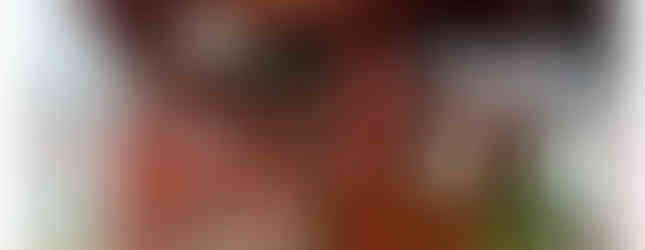Known for its stunning hills and iconic Golden Gate Bridge, San Francisco is a city of remarkable architectural diversity. From its famous Victorian houses to cutting-edge modern buildings, San Francisco offers a rich variety of styles that tell the story of its cultural and economic evolution.
San Francisco’s compact neighbourhoods and extensive public transportation network make it perfect for backpackers looking to explore the city on foot or by budget-friendly options like the city’s iconic cable cars. Architecture lovers will find endless inspiration in the city’s eclectic mix of historical and modern buildings.
In this blog, we’ll walk you through 10 unmissable architectural gems that capture the heart of San Francisco, each offering a unique perspective on the city’s history and design.
No.1. The Painted Ladies
Year of Construction: Late 1890s
Architect: Multiple Victorian architects
Style: Victorian “Queen Anne” style
Purpose: Private residences
Why it's special: The Painted Ladies, also known as “Postcard Row,” are among the most iconic Victorian houses in the world. These pastel-colored homes along Alamo Square reflect the rich Victorian architecture that flourished after the Gold Rush. Their bright hues and intricate woodwork represent the city's ability to rebuild after the devastating 1906 earthquake.
What to explore: You can visit Alamo Square Park to enjoy sweeping views of the San Francisco skyline behind the Painted Ladies, architecture lovers can admire the ornate details, gabled roofs, and vibrant colours that make these homes some of the most photographed buildings in the city.
No.2. Golden Gate Bridge
Year of Construction: Completed in 1937
Architect: Joseph Strauss (chief engineer) and Irving Morrow (design consultant)
Style: Art Deco and modernist influences
Purpose: Suspension bridge connecting San Francisco to Marin County
Why it's special: One of the most recognisable landmarks in the world, the Golden Gate Bridge is a feat of engineering and design. The bridge’s bold International Orange colour, combined with its sleek Art Deco towers, make it an architectural and engineering marvel. Spanning 1.7 miles, it was the longest suspension bridge in the world when completed.
What to explore: You can walk or bike across the bridge, enjoying breathtaking views of San Francisco Bay and the Pacific Ocean, architecture lovers will be fascinated by the bridge’s Art Deco detailing, including its railings, lighting, and riveted towers, head under the bridge to find an interesting earth quake resilience test and get a unique perspective of the engineering masterpiece.
No.3. Transamerica Pyramid
Year of Construction: Completed in 1972
Architect: William Pereira
Style: Modernist pyramid style
Purpose: Commercial office tower
Why it's special: At 853 feet, the Transamerica Pyramid is one of the most distinctive skyscrapers in San Francisco. Its sleek pyramid shape was designed to maximise sunlight on the surrounding streets and represents a forward-thinking design in contrast to the city’s more traditional architectural styles. The building’s sharp angles and futuristic design make it a symbol of San Francisco’s innovation and growth, I would also like to give a shout out to the porter on the door, when photographing this building, I told her I was an architects and she happily chimed in with some great facts about the building and its importance.
What to explore: You can explore the surrounding Financial District, which is full of shops, restaurants, and cafes, Montgomery Street has a stunning eclectic mix of architecture which we will cover in a separate pos. Architecture lovers will be drawn to the pyramid’s bold geometric design and its unique silhouette against the city’s skyline as well as its attention to detail on its complex triangulated junctions. Its truly a building you could walk around and start up at for hours.
No.4. The Palace of Fine Arts
Year of Construction: Built for the 1915 Panama-Pacific Exposition
Architect: Bernard Maybeck
Style: Beaux-Arts and Neoclassical style
Purpose: Originally built for the 1915 World’s Fair, now a cultural landmark
Why it's special: The Palace of Fine Arts is one of the most beautiful structures in San Francisco. Modelled after ancient Roman and Greek ruins, its grand rotunda and classical colonnades are set in a peaceful lagoon, making it a picturesque spot for reflection and photography. Originally built to exhibit art, it now serves as a popular venue for events and films.
What to explore: Backpackers can relax in the park or by the lagoon, enjoying the peaceful surroundings, while architecture lovers will appreciate the neoclassical detailing, grand scale, and historical significance of the building.
No.5. Coit Tower
Year of Construction: 1933
Architect: Arthur Brown Jr. and Henry Howard
Style: Art Deco style
Purpose: Built as a monument to Lillie Hitchcock Coit, a local patron of the fire department
Why it's special: Standing atop Telegraph Hill, Coit Tower is an iconic Art Deco structure that offers panoramic views of the city and bay. Inside, visitors can explore murals created by local artists as part of the New Deal’s WPA program, depicting scenes of San Francisco life during the Great Depression.
What to explore: You can hike up to the tower via the Filbert Steps, architecture lovers will be intrigued by its Art Deco design and historical murals that capture the essence of 1930s San Francisco.
No.6. Grace Cathedral
Year of Construction: Completed in 1964 (after several phases)
Architect: Lewis P. Hobart
Style: French Gothic Revival style
Purpose: Episcopal cathedral
Why it's special: Inspired by the great cathedrals of Europe, Grace Cathedral is a majestic Gothic Revival masterpiece that overlooks Nob Hill. Its soaring spires, beautiful stained glass windows, and intricate stone carvings make it one of the most important religious and architectural landmarks in San Francisco. The cathedral also features a labyrinth for meditation and reflection.
What to explore: Backpackers can enjoy the views from Nob Hill or attend a service, while architecture lovers will marvel at the flying buttresses, stained glass, and the incredible interior murals and mosaics.
No.7. The Ferry Building
Year of Construction: 1898
Architect: A. Page Brown
Style: Beaux-Arts style
Purpose: Originally a transportation hub, now a marketplace
Why it's special: The Ferry Building is a testament to San Francisco’s maritime past and Beaux-Arts architecture. Its grand clock tower is reminiscent of a European train station, and today, it serves as a vibrant marketplace filled with local vendors and eateries. It’s a key part of San Francisco’s waterfront revitalisation.
What to explore: You can sample local food and shop for artisan goods, while architecture enthusiasts will appreciate the Beaux-Arts grandeur, including the building’s intricate ironwork and the soaring central nave.
No.8. Alcatraz Island
Year of Construction: 1859 (initial military fortress), 1934 (converted to a federal prison)
Architect: U.S. Army engineers
Style: Military fortress and penal architecture
Purpose: Initially a military fort, later a notorious federal prison
Why it's special: Alcatraz Island is one of San Francisco’s most famous landmarks. Its stark, utilitarian design contrasts with the surrounding natural beauty of the bay. Although best known for its time as a federal penitentiary, Alcatraz’s architecture reflects its multi-layered history, from military fortress to notorious prison.
What to explore: Backpackers can take a ferry to the island and explore the haunting remains of the prison, while architecture lovers will appreciate the military design and historical significance of the structures on the island.
No.9. The Wave Organ
Year of Construction: 1986
Architect: Peter Richards and George Gonzales
Style: Acoustic sculpture blending nature and architecture
Purpose: Public art installation that amplifies the sounds of waves
Why it's special: The Wave Organ is a unique piece of public art located on the shores of San Francisco Bay. Designed as an interactive acoustic sculpture, the organ is built from stone and marble, with pipes that extend into the water to create sound as waves crash into the structure. It’s a perfect blend of art, nature, and architecture.
What to explore: Backpackers can relax by the bay and listen to the soundscapes produced by the waves, while architecture lovers will be intrigued by the creative use of materials and the structure’s harmonious integration with its natural environment.
No.10. The San Francisco–Oakland Bay Bridge
Year of Construction: 1936 (renovated in 2013)
Architect: Charles H. Purcell
Style: Cantilever bridge with Art Deco elements
Purpose: Connects San Francisco to Oakland across the Bay
Why it's special: Often overshadowed by the Golden Gate Bridge, the Bay
Bridge is an equally impressive feat of engineering. The two-tiered bridge stretches over 4.5 miles, with its eastern span rebuilt in 2013 to withstand earthquakes. It combines cantilever and suspension bridge designs, and its Art Deco towers are a nod to 1930s architectural trends.
What to explore: Backpackers can take a ferry or drive across the bridge for stunning views, while architecture lovers will appreciate the bridge’s scale, design, and the engineering challenge of building across the bay.
SAN FRANCISCO ARCHITECTURE TOP 10 MAP
BONUS 01
The sales force building
SAN FRANCISCO ARCHITECTURE FINAL THOUGHTS
San Francisco’s diverse architectural landscape offers something for everyone, from its Victorian Painted Ladies to modern marvels like the Transamerica Pyramid. For backpackers, the city is full of easily accessible landmarks, while architecture lovers will appreciate the historical and design significance of its buildings. Be sure to visit these top 10 architectural marvels to fully experience the unique beauty and culture that makes San Francisco one of the most fascinating cities in the world.
Ready to explore San Francisco’s architectural wonders? Whether you're a budget-conscious backpacker or a passionate architecture lover, these landmarks will enhance your visit to the City by the Bay.
Start planning your trip today and discover the architectural gems that define San Francisco’s unique charm. Check out the backpacking USA travel guide of the website for more information on San Francisco including things to do and further place to explore.
Until the next one take care explorers
Jack

For the curious explorer












































































ความคิดเห็น